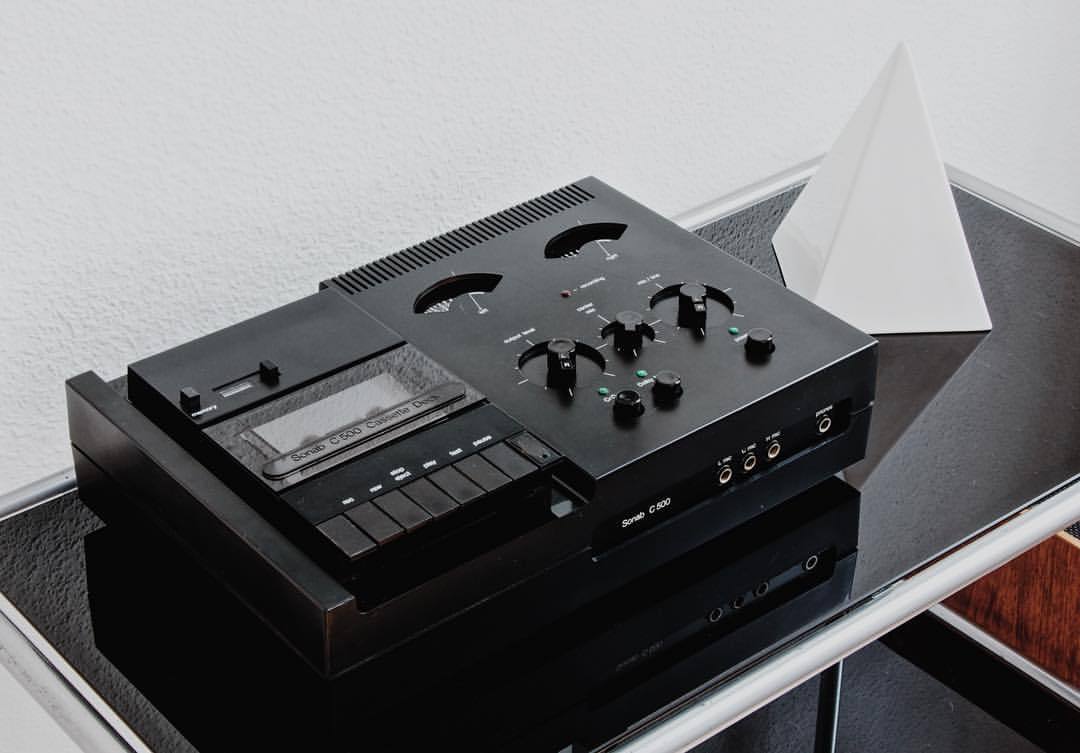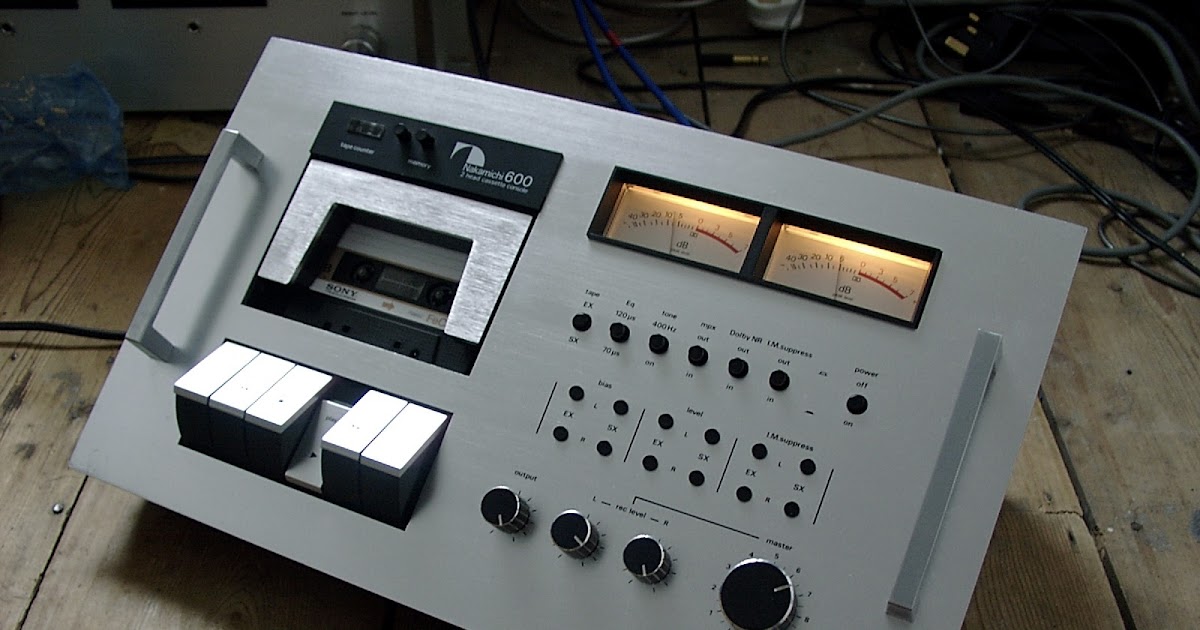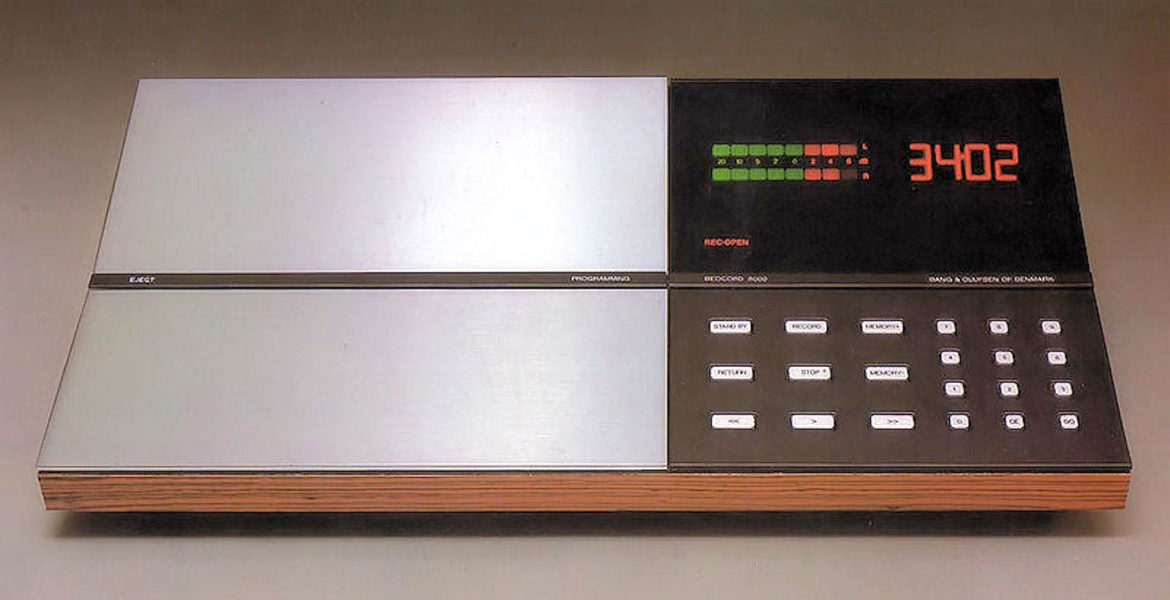The range and depth of hi-fi in the 1970s were enormous. We’ve all heard of the emergence of the major Japanese labels, but there were lots of smaller continental European names developing as well, amid the last gasps of British brands like Garrard and Leak. Bang & Olufsen was arguably at its pinnacle at the time, but there were other businesses offering beautifully designed gear as well, from Dieter Rams’ work with West German Braun to Clas-Göran Wanning’s work with Swedish-based Sonab.
As Swedish as SAAB was, it created products that were purposefully different from most others, such as the groundbreaking OA loudspeaker series with its array of top-mounted tweeters. Then there was Sonab’s appealing line of amplifiers and receivers, which concentrated on ease of use and minimalist design, avoiding the clutter found in Japanese competitors. That’s also why Clas-Göran Wanning created the C 500 cassette deck its peculiar appearance.
Compact Cassette was just starting to gain traction in the early 1970s; the format had been existing for a decade but, like CD ten years later, did not gain widespread popularity until it had been on the market for a long time. Many manufacturers, however, realized they needed a hi-fi stereo tape deck by 1974. Some firms, such as Sony, Philips, and Pioneer, went it alone; others had no choice but to hire an OEM specialist to create one with their logo on it.
Nakamichi was in the vanguard of this, producing decks such as the Thorn DCR1, Harman Kardon HK1000 and HK2000, Goodmans SCD100, Wharfedale 20D, Advent 200, Sansui SC-700, and Fisher RC-70/80. All of these were based on the Nakamichi 500 chassis, and the Sonab C 500 was born from it as well. Soon after, the Concord MK7, Elac CD520, Leak 2002, and Yamaha TB-700 used the same internals as Nakamichi’s following version 550.
The visual and ergonomic design that Sonab brought to the party was one of the best of the Nakamichi variants. The business claimed at the time that it was “built in such a way as to make it as simple as possible to handle, play, and above all to record.” Even by today’s standards, it is a clean and exquisite looking machine, so this was not empty rhetoric. Despite having a plastic body, it was well-made, and the Nakamichi transport is sharp and positive to use, as one would expect.
By mid-seventies standards, measured performance was pretty respectable, though it won’t set the globe on fire right now. Wow and flutter of 0.13 percent (peak weighted) and a frequency response of 30-16,000Hz (+/-3dB) are on the table. With Ferric and Dolby turned off, the signal-to-noise ratio was 51dB, and with Chrome and Dolby turned on, it was 60dB. This was adequate for a deck of the day, especially one that was small and compact (380x250x105mm) and weighed 4.5kg.
It was a pleasant machine to use; everything was simple, yet being a true Nakamichi, you could access to the rear where there were record calibration presets for Chrome and Ferric tape, allowing you to precisely set it up for your preferred formulation. When you looked over the top of the deck to adjust recording settings, the odd recessed meters were easy to read, but they were largely invisible during playback when you didn’t need them.
Sonically, the Sonab is adequate but not exceptional. Obviously, any deck this old could be on its last legs, but if used with good Chrome tape and a well-preserved Permalloy head, it can produce a powerful, melodic sound with a reasonably sparkle high end. It will sound solid and detailed, but it will still be soft and blurry by the standards of, say, cassette systems from the 1990s. Still, this is a fascinating rarity and, at the time, a high-quality item; the Sonab C 500 cost a lot of money when it was new.
Surprisingly, a substantial number of them are still for sale on online auction sites, however the majority are in Northern Europe rather than the United Kingdom. Depending on the price, condition, and provenance, expect to pay between £100 and £200. Enjoy your search for one of the most bizarre Nakamichis in drag ever created!






